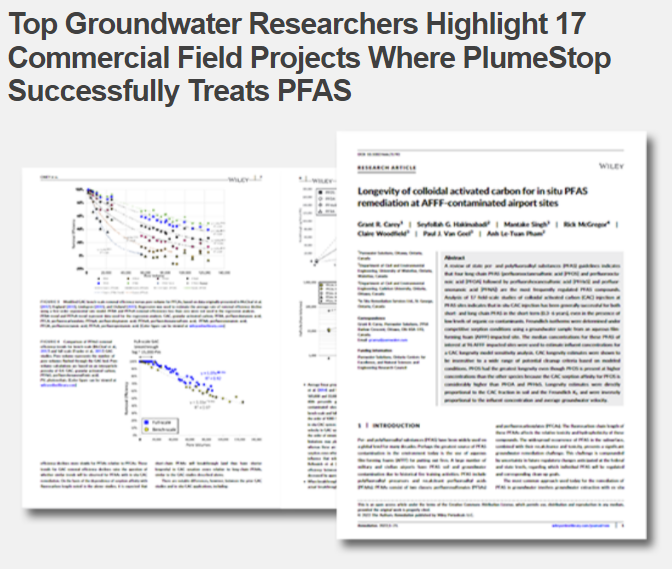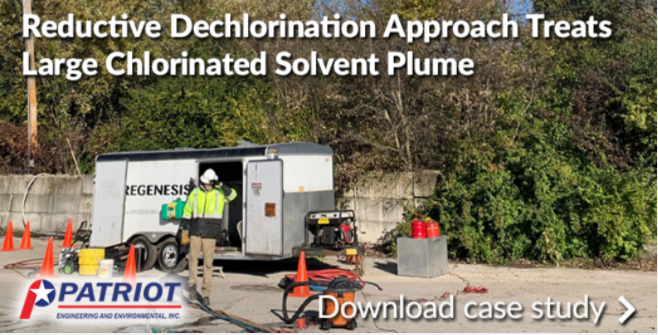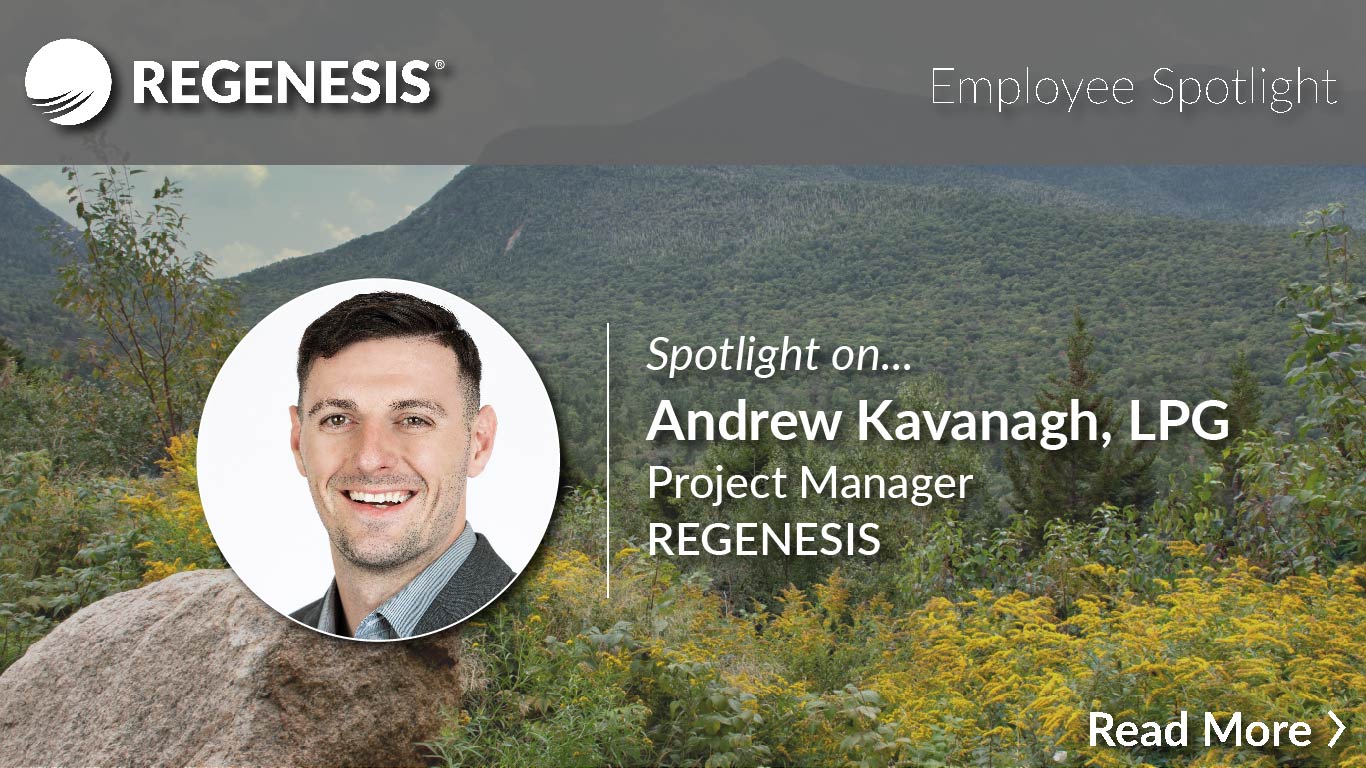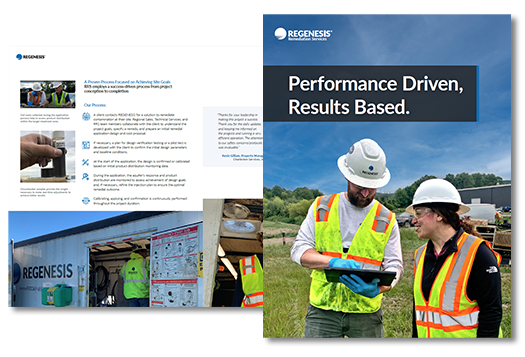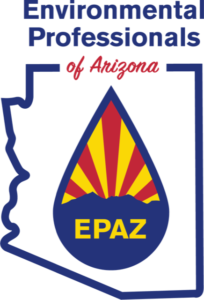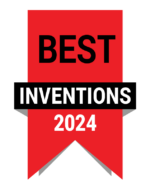December 2022 Newsletter
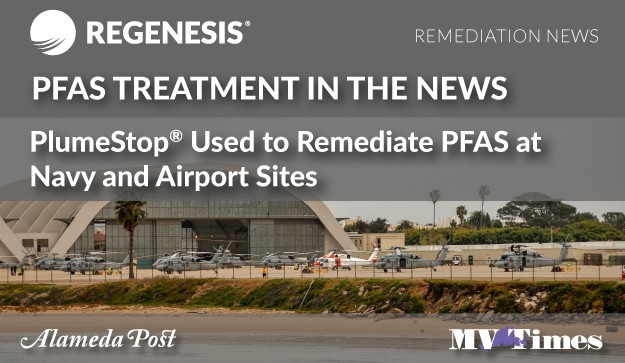
Alameda Post Article – Navy to Lock Down PFAS in Groundwater with Carbon
This article published in the Alameda Post discusses the Navy’s use of injecting colloidal activated carbon (CAC), commercially sold as PlumeStop, into the subsurface to prevent PFAS contaminant migration. The goal of the project is to prevent the movement of PFAS into the Oakland Estuary. The approach using CAC subsurface injection was chosen as a low-cost alternative to pump-and-treat systems. The sustainable use of CAC turns the aquifer into a carbon filter and generates no PFAS waste. Once the carbon filter system is in place and performs as expected, the Navy will most likely utilize this method at other PFAS sites at Alameda Point.
Martha’s Vineyard Times Article – PFAS mitigation pilot program begins at M.V. Airport
This article published in the Martha’s Vineyard Times discusses the use of injecting colloidal activated carbon (CAC), commercially sold as PlumeStop, into the subsurface at Martha’s Vineyard Airport. Tetra Tech vice president Ron Myrick, whose firm handled the testing and mitigation of PFAS around the Martha’s Vineyard Airport area and completed the first stage of PFAS investigations in 2019, notified the commission during an August meeting about plans to use a remediation pilot program of “targeted PlumeStop application to assess mitigating further migration of PFAS” off the airport.
Subscribe To Our Monthly Newsletters
Featured Research Article – Top Groundwater Researchers Highlight 17 Commercial Field Projects Where PlumeStop Successfully Treats PFAS
Top groundwater researchers in the field of groundwater contaminant fate and transport recently published a REMEDIATION Journal article entitled Longevity of colloidal activated carbon for in situ PFAS remediation at AFFF-contaminated airport sites by Carey et al. The article highlights the application of PlumeStop colloidal activated carbon (CAC) at 17 commercial field projects to effectively treat PFAS in situ. The authors found that the vast majority of PFAS at airport sites are PFOS and PFHxS. This is noteworthy as these contaminants are preferentially sorbed to activated carbon when compared to the polyfluorinated carboxylic acid contaminants (i.e. PFOA) of similar chain length. The article also notes that the use of CAC in situ to treat PFAS is expected to have substantially greater treatment longevity compared to ex situ activated carbon use.
PFAS Treatment for Airports
Featured Case Study: Reductive Dechlorination Approach Treats Large Chlorinated Solvent Plume
Employee Spotlight – Andrew Kavanagh, RRS Midwest Region Project Manager
REGENESIS Remediation Services – Performance Driven, Results Based
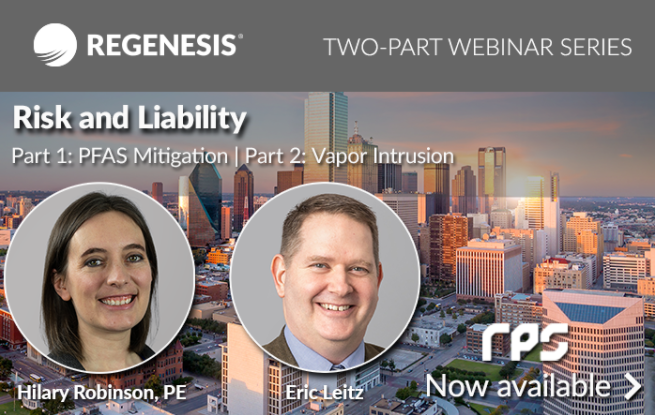
Webinar Recording: Risk and Liability, Part 1 & 2 – Now Available
In this two-part webinar series we were pleased to have special guest speakers Hilary Robinson, PE, Emerging Contaminants Lead and Eric Leitz, Director of Legacy Site Services at RPS Group. Their presentations discussed risk mitigation and managing liabilities, taking a look at PFAS contamination and vapor intrusion. The full recordings of both webinars are now available!

The team at REGENESIS and Land Science wishes you and your family Happy Holidays, and we look forward to working with you in the New Year!
Connect with us at Upcoming Events
EPAZ 2023 Annual Conference
2/28 – 3/1/2023 | Tempe, AZ
Science of PFAS Conference
3/9 – 3/10/2023 | Marlborough, MA
West Coast Conference
3/20 – 3/23/2023 | San Diego, CA
2023 GBA Brownfields Seminar
4/11/2023 | Georgia
Questions?
REGENESIS has remediation experts based worldwide to assist you in your brownfield site cleanup. As the technology leader in advanced bioremediation solutions, we can help ensure success on your next remediation project. Use the map on our website to find your regional REGENESIS contact today.

